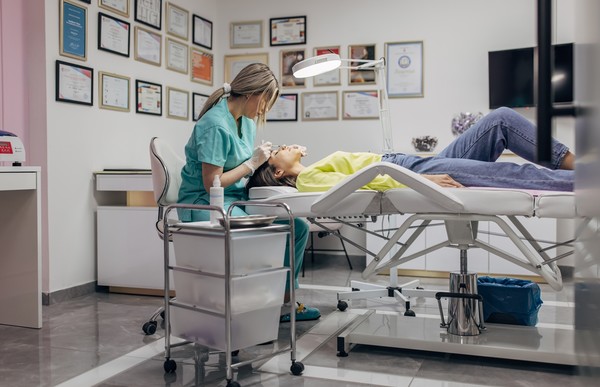The number of foreign patients who come to Korea for medical tourism is increasing due to the easing of Covid-19 quarantine measures.
Rep. Suh Young-seok of the opposition Democratic Party of Korea (DPK) said Wednesday that the number of foreign patients totaled 181,481 last year, up 34.8 percent from 2020, based on data submitted by the Ministry of Health and Welfare to the National Assembly for administrative inspection.
The figure marked a sharp rebound from 2020, when foreign patients’ visits tumbled by 77.2 percent from the previous year due to Covid-19, Rep. Suh said.

Foreign patients are those who receive treatment in Korea through medical tourism based on the Medical Overseas Advance Act, excluding medical insurance subscribers and their dependents and foreign residents in Korea.
Hit hardest by Covid-19 in attracting foreign patients were health examination centers. The number of foreign patients who visited Korea for medical checkups in the pre-pandemic year of 2019 totaled 54,185, but the figure plummeted to 4,848 in 2020, marking a 91.1 percent decline. Besides, oriental medicine hospitals, dermatologists, and plastic surgeons also saw their foreign clients tumble to 2,204, 15,400, and 16,585, recording decreases of 90.7 percent, 81.9 percent, and 81.7 percent in the same period.
However, in 2021, the second year of the pandemic, the attraction of foreign patients turned around to a recovery.
The number of foreigners who visited Korean health checkup centers totaled 18,369 last year, rocketing by 278.9 percent from 2020. Those who received integrated internal medicine treatment also rose 64.7 percent to 47,930, followed by ophthalmology cure, which increased 55.2 percent to 6,692, and dental treatment, rising 44.6 percent to 5,749.
On the other hand, the recovery of foreign patients’ return was relatively slower for dermatologists, plastic surgeons, and oriental doctors.
In 2020, Indonesians recorded the sharpest drop in medical tourism to Korea. Only 705 Indonesians received medical treatment here two years ago, down by 87.7 percent from 2019. Chinese, Japanese and Russian visitors also plunged 80.9 percent, 79.4 percent, and 79.1 percent to 31,084, 14,077, and 6,246 in the cited period.
However, Indonesia also marked the steepest rebound in medical tourists last year, recording a 118.7 percent growth to 1,542. Canadian medical tourists also jumped 118.7 percent to 2,333, and Vietnamese and Philippine visitors also soared 93.9 percent and 86.5 percent to 10,829 and 2,660.
“More foreign patients will likely visit Korea for medical tourism this year,” Rep. Suh said. “Medical tourism is a high value-added industry that combines Korea’s high-quality medical service and tourism resources. Government policymakers and industry executives should develop new markets and expand attraction channels by making the most of heightened natural status thanks to the K-quarantine.”

